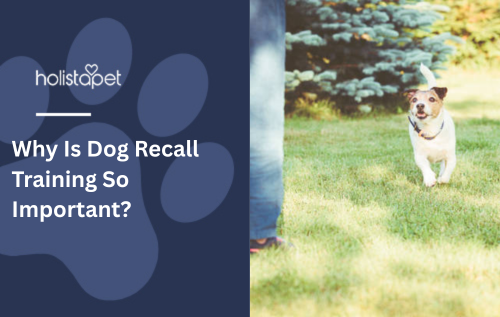When it comes to owning a dog, one of the most essential commands your furry friend should master is recall training—teaching your dog to come when called. Not only does it strengthen your bond, but it also ensures their safety in various situations. Imagine your dog running off at the park or slipping out the front door; having a reliable recall could literally save their life.
In this guide, we’ll explore why Dog Recall Training matters, how to make it effective, and the steps you can take to build trust and responsiveness with your pup.
 🐶 What Is Dog Recall Training?
🐶 What Is Dog Recall Training?
Dog Recall Training is the process of teaching your dog to come back to you immediately when you call their name or use a specific command. It’s more than just obedience—it’s about communication, consistency, and mutual respect. A solid recall command can make off-leash adventures stress-free and safe.
💡 Why Recall Training Matters
-
Safety First – A dog that comes when called avoids traffic, aggressive dogs, or dangerous areas.
-
Freedom to Explore – Confident recall allows for safe off-leash playtime.
-
Stronger Bond – Training enhances trust and understanding between you and your pet.
-
Better Control – Helps prevent problem behaviors like chasing or wandering off.
🐾 Steps to Effective Dog Recall Training
-
Start Indoors or in a Controlled Space
Begin in a quiet, distraction-free area. Say your dog’s name followed by your recall word (like “Come!” or “Here!”). -
Use Positive Reinforcement
Reward your dog immediately with treats, praise, or play. Dogs repeat behaviors that bring positive outcomes. -
Keep Sessions Short and Fun
Practice for 5–10 minutes daily. Make it a game rather than a chore. -
Add Distance Gradually
Once your dog responds well indoors, move to your yard or a safe park. Slowly increase the distance and distractions. -
Never Punish for Returning
Even if your dog took a while to come back, always reward them. Punishment can cause confusion and make them afraid to return next time.
🦴 Pro Tips for Success
-
Use high-value treats that your dog only gets during recall training.
-
Keep your tone happy and inviting, not demanding.
-
Practice recall randomly—don’t only call them when playtime is over.
-
Introduce long leash training to safely build distance control.
 ❓ Frequently Asked Questions
❓ Frequently Asked Questions
Q: How long does dog recall training take?
A: It depends on your dog’s breed, age, and consistency of training. Some dogs learn within weeks, while others may take a few months to master recall in all situations.
Q: My dog ignores me outside—what should I do?
A: Practice in gradually more distracting environments. Increase reward value and avoid scolding. Patience and consistency are key.
Q: Should I use a whistle for recall?
A: Yes, many trainers recommend recall whistles because they produce a consistent, clear sound that cuts through distractions.
Q: Can older dogs learn recall?
A: Absolutely! Older dogs can learn just as well as puppies with the right motivation and repetition.
🐕 Final Thoughts
Dog Recall Training is one of the most valuable skills you can teach your pet. It builds safety, trust, and freedom for both of you. With consistency, patience, and plenty of praise, your dog will learn that coming back to you is always worth it.
Remember: successful recall training isn’t just about control—it’s about connection. When your dog happily runs back to you, it’s a sign of love, loyalty, and trust that lasts a lifetime.
Helpful Notes:
-
Practice recall daily in short, positive sessions.
-
Avoid distractions in the beginning stages.
-
Always reward your dog for returning, no matter how long it takes.
-
Consider professional training if your dog struggles with recall outdoors.


 CBD Oil for Dogs - Fast Acting
CBD Oil for Dogs - Fast Acting
 Chicken Flavored CBD Oil For Dogs - Easy Dose
Chicken Flavored CBD Oil For Dogs - Easy Dose
 Salmon Flavored CBD Oil For Dogs - Highly Rated
Salmon Flavored CBD Oil For Dogs - Highly Rated
 CBG Oil for Dogs and Cats - Loved by Thousands
CBG Oil for Dogs and Cats - Loved by Thousands




Leave a comment
All comments are moderated before being published.
This site is protected by hCaptcha and the hCaptcha Privacy Policy and Terms of Service apply.